#Sri Lanka import products
Text
Sri Lanka imports data provider
Exim Trade Data is the most authorized Sri Lanka import export data provider company. We are collecting our raw data from Sri Lanka customs government departments and some verified unknown sources and after that our, AI System compiles that raw data into a well-customized database. If you want to see the sample data of Sri Lanka import data then click on the link.

#Sri Lanka import data#importer of Sri Lanka#import of Sri Lanka#Sri Lanka import products#Sri Lanka importers database#Sri Lanka import sample data#Sri Lanka import customs data#Sri Lanka importers data#Imported products in Sri Lanka
0 notes
Text
Because most medicines were produced from [...] plants [...] these early “pharmaceutical monopolies” required full control of the production and trade of a species. Russia successfully managed the rhubarb trade in the seventeenth and eighteenth centuries, while Spain controlled the distribution [...] from Spanish America, mainly cinchona from Peru, in the same period. “True” cinnamon grew only on Sri Lanka, so whoever controlled the island could dominate the cinnamon trade. The Portuguese were the first to create a monopoly on the cinnamon trade there in the early seventeenth century. That monopoly was later optimized by the Dutch in the late eighteenth century [...].
“True” should indeed be in quotation marks here - the term reflects the historically contingent tastes of Europeans, rather than any botanical category [...]. The rarity of cinnamon in the early modern period made it one of the most coveted spices of that era, and European countries without direct access to the cinnamon trade tried to imitate, substitute, steal, smuggle, or transplant the “true” product from Sri Lanka. [...]
---
In the early modern period, cinnamon was also important both as an exotic commodity and as an important therapeutic substance. The Dutch East India Company (VOC), which controlled Sri Lanka between 1658 and 1796, was well aware of this. The VOC vigorously exploited the Salagama - [...] specialized Sri Lankan cinnamon peelers - to supply enough cinnamon, which for a long time was gathered from forests. Only after the peelers rebelled, leading to a war that lasted between 1760 and 1766, did the company revise its production policy.
Experiments with “cinnamon gardens” (kaneeltuinen in Dutch) led to enormous successes, and the company eventually grew millions of cinnamon trees on plantations in the final decades of the eighteenth century. Meanwhile, competitors of the Dutch had come up with their own solutions [...]: Spain had started growing other Cinnamomum species on plantations in the Philippines, while France and Britain succeeded in transplanting cinnamon to islands in the Caribbean. But the Dutch monopoly was not simply threatened by outside competition. Smuggling, by peelers or VOC personnel, was strictly forbidden and severely punished. [...]
---
Hendrik Adriaan van Rheede tot Drakenstein (1636–1691) was the VOC administrator on India’s Malabar Coast when he started experimenting with cinnamon oil in the 1670s.
He concluded that the oil, which he extracted from the roots of local cinnamon trees, was of better quality than oil from cinnamon trees on Sri Lanka. Van Rheede reported these results in his entry on cinnamon in volume 1 of the Hortus Indicus Malabaricus, the twelve-volume book that was produced by a team of local and European scholars, and supervised by Van Rheede himself.
Van Rheede’s assessment of cinnamon - in fact, the very publication of a multi-volume work about the flora of Malabar - infuriated the governor of Sri Lanka, Rijckloff van Goens, who had secured the cinnamon monopoly of Sri Lanka for the Dutch. Van Goens insisted that Van Rheede stop his medical experiments, claiming that the monopoly was at risk if the cinnamon trade was extended beyond the island of Sri Lanka.
But Van Goens was not so much concerned about the therapeutic efficacy of cinnamon from either of the two regions. He was motivated by an imperial agenda and regarded the natural products of Sri Lanka as superior to anything similar in the region.
The experiments of Van Rheede, who was his former protégé, threatened not so much the botanical quality of the product, or the commercial interests of the Dutch East India Company, but rather the central position of Sri Lanka in the Dutch colonial system and the position of Van Goens as the representative of that system.
---
Even when Sri Lanka still only produced cinnamon that grew in the wild, the Dutch harvested enough to supply an international market and were able to dictate the availability and price level throughout the world. The monopoly, whether defined in commercial or pharmaceutical terms, was not easily put at risk by efforts like Van Rheede’s. Those involved in the early modern cinnamon trade were motivated by various reasons to defend or undermine the central position of Sri Lankan cinnamon: botanical, medical, commercial, or imperial. These motives often overlapped.
---
All text above by: Wouter Klein. “Plant of the Month: Cinnamon.” JSTOR Daily. 17 February 2021. “Plant of the Month” series is part of the Plant Humanities Initiative, a partnership of Dumbarton Oaks and JSTOR Labs. [Bold emphasis and some paragraph breaks/contractions added by me. Presented here for commentary, teaching, criticism purposes.]
151 notes
·
View notes
Note
i feel like this is the banana discourse all over again ;-; transport really is not the only issue here. the linked article also points this out (but it's not the main focus), discussing how much the large scale industrial production of food contributes to greenhouse gas emissions compared to the factor of transporting that food, be it internationally or locally. for something like beef it probably doesn't make a huge difference to your carbon footprint whether you buy it locally or not (tbh i'm not versed enough on this topic to talk about that), but I'm not sure that's the case when it comes to plant-based foods.
so, talking specifically about the production of plant-based foods, it probably does make a difference whether the food is grown in seasonal, local farms rather than imported from (often) year-around farms in the global south. the thing is, it isn't that we export whatever is left over from local consumption, it is that we "specialise" in exporting a particular type of food. as someone living in sri lanka (or ceylon), we really don't need to grow that much tea lol.
so this setup of having to export a particular food because the economy depends on it, uses up large swathes of land (restricting the amount of land that can be used to grow food for local consumption and basically destroying the soil) and the labour of overworked and underpaid workers (obtained for much cheaper in the global south than the global north, which is also why people from the Pacific Islands are "encouraged" through migration schemes to become fruit pickers in Australia and New Zealand). like we don't have to get into the exploitation of land and labour in the global south that occurs through this particular system of global food production, but when we're talking about how environmentally beneficial transporting locally vs. internationally is, the factors that play into the production of that food are...kind of important.
yep!
50 notes
·
View notes
Text

IBAIS MEDIA is a Digital I.T. & Advertising company.
We assist in promoting the business of all Manufacturers, Traders, Exporters and Importers across India through Architectural and Interior products like Architect & Interior Hardware, Tiles-Sanitary, Wooden, Furniture and in future Home Décor.
If you want to know more information, please visit our website:
www.ibaisindia.com
We are creating future Online B2B, B2C & B2E building 🏢 material E-commerce platforms.
We advertise in 300+ cities of PAN India. we have also covered Bangladesh, Nepal, Sri Lanka, Bhutan, Myanmar, Africa and Dubai and other Neighboring Countries and All Social Media channels.
(Facebook, Instagram, Twitter, LinkedIn, Pinterest, Telegram, WhatsApp channel)
(More than 28,000+ Members have already joined our Digital Platforms.
Those Who are involved in the HARDWARE business Manufacturers, Wholesalers, Dealers, Exporters, Importers, Architects-Interiors and Carpenters.)
IBAIS MEDIA is a digital platform for Branding, Marketing & Services. We are a Develop Marketing platform that Specialized in Strategy, Creativity, Design and innovative technology.
#businessb2b#architectdesign#architecturalhardware#design#interiorproducts#hardwaresolution#hardwaremanufacturer#architecturalhardwarefitting#businesshardware#hardwareb2bplatform#ibais#ibaismedia#ibaishardware#hardwarefittingitem#fittingproducts#homedecor#glassfitting#bathdecor#businessplatform#hardwareb2b#hardwaremarketing#marketing#advertising#hardwareitem
7 notes
·
View notes
Text


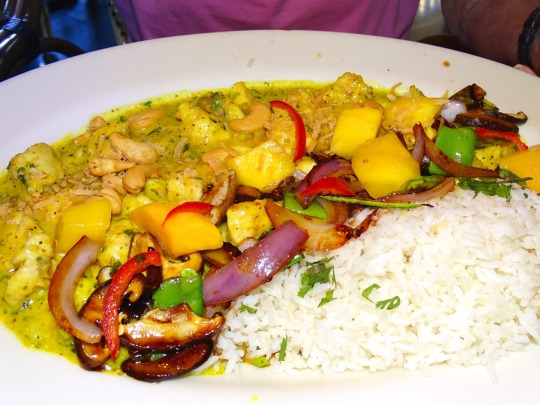


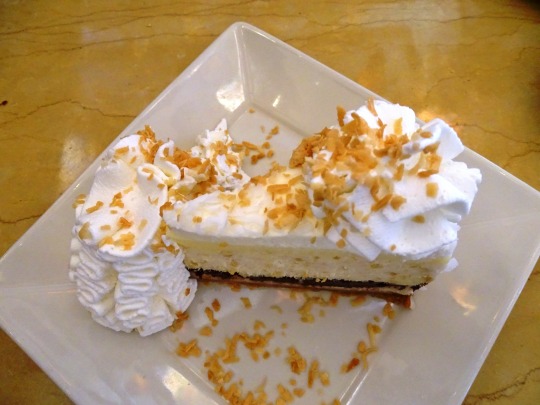



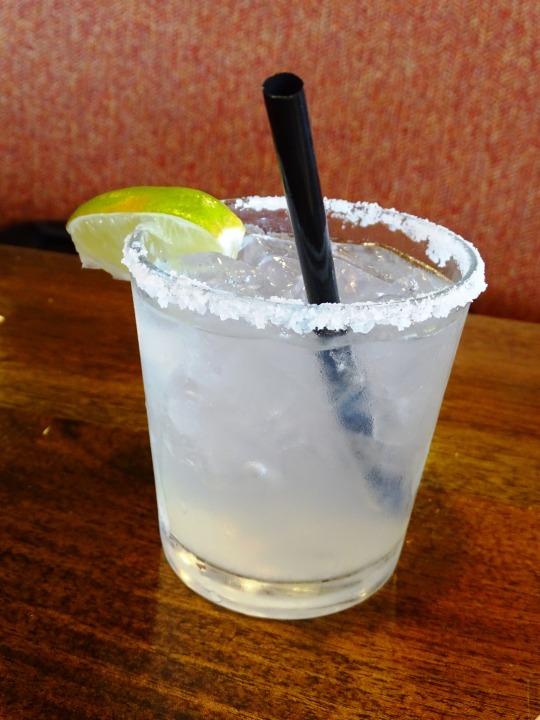



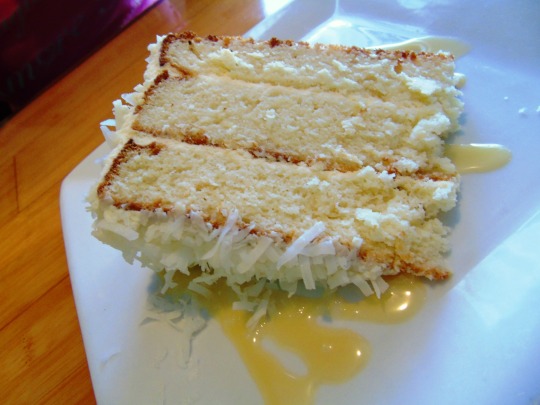



World Coconut Day
Discover the tropical taste and versatility of this round, hairy fruit with a hard shell. From coconut water to oil, there's so much to love about them!
A popular fruit consumed around the world, the coconut is healthy and tasty, and it grows in tropical regions. World Coconut Day celebrates everything that has to do with this delicious and nutritious fruit!
History of World Coconut Day
Coconuts are a food that humans have found sustenance in for at least 2,000 years. Probably native to Indonesia, the name coconut translates to “walnut from India”. While coconuts would have traveled throughout the Indian subcontinent and even to Africa in the early years, they didn’t make it to Europe until some time around the 16th century.
It is likely that coconuts were introduced to Europeans through the Maritime Silk Road, which connected the East with the West. Marco Polo may have been one of the many travelers and explorers who would have brought coconuts back with them.
When the Asia Pacific Coconut Community (APCC) was founded in 1969, it was created in an attempt to help support and promote the tropical countries that are high in growing, producing, selling and exporting coconuts. Located in Jakarta, Indonesia, this group stays connected with the production and export of coconuts. Sharing scientific expertise and coordinating activities within the industry, the members of the APCC are responsible for the growth of more than 90% of the coconuts produced and sold all over the globe.
Founded in 2009, World Coconut Day was started by the Asia and Pacific Coconut Community to promote the activities of coconut growers while raising awareness about the fruit for those outside of the growing community.
The celebration of World Coconut Day offers plenty of opportunities for this important product of the Asia-Pacific region to enter into the forefront of conversation of people around the world!
World Coconut Day Timeline
1st Century BC
Coconuts are present in Indian subcontinent
Historical records from Sri Lanka show that coconuts existed before this time.
16th Century
Coconuts are introduced to Europe
Arriving as many exotic foods did, through the Maritime Silk Road, Europeans were exposed to coconuts through traders like Marco Polo.
1946
Almond Joy candy bar hits the scene
This candy bar combines the sweetness of shredded coconut with an almond and then covers it in delicious milk chocolate.
2004
Vita Coco introduces coconut water
Offering a delicious and nutritious beverage, Vita Coco begins a trend of bottling coconut water and making it commercially available.
2009
World Coconut Day is first celebrated
Started by the Asia-Pacific Coconut Community, World Coconut Day aims to raise awareness and bring harmony to the growth and distribution of coconuts.
How to Celebrate World Coconut Day
Getting involved with World Coconut Day is easy – all it takes is tasting and enjoying this delicious fruit. Consider some of these ideas to celebrate the day:
Enjoy Eating a Coconut
Some people who haven’t grown up around this delicious fruit might be intimidated by its brown, hairy shell. But once it is broken into and the creamy white flesh is exposed, it is a fragrant delight to behold.
First, start by poking a hole in the coconut at the end near the ‘eye’, where the shell is the thinnest. Use a screwdriver or hammer with a clean nail to make the hole. This will allow for the water of the coconut to be drained.
Pro Tip: Strain the coconut water through a cheesecloth and into a cup, and then drink it up!
Once the juice has been drained out of the coconut, one of the easiest ways to break open the fruit is by using a handsaw to cut it in half. Other people might want to simply put it into a sturdy bag and bang it against a stone or concrete until it breaks. This method is a bit messy, but it works.
Once the coconut is open, remove the meat from the shell and enjoy eating it fresh!
Cook or Bake with Coconut
One way to enjoy National Coconut Day without having to go to the trouble of cracking open the fruit is by purchasing the coconut in bags that are shredded or chipped. These are often pre-sweetened and ready to be used in recipes. Since the fruit is a tropical one, and the day falls at the end of the summer, many recipes are cool and refreshing.
Consider cooking or baking with some of these recipe ideas to celebrate the day:
Coconut Cream Pie. This classic pie contains coconut flakes or chips, coconut milk, heavy cream and eggs, and is topped with mounds of sweet whipped cream.
Coconut Ice Cream. This refreshing dessert is so simple, all it needs is 6 ingredients: whipping cream, sugar, vanilla, milk, salt and, of course, shredded coconut.
Coconut Milk Pudding. This delicious recipe is similar to the consistency of flan, but is made with coconut milk, gelatin, mango, butter, grated coconut, condensed milk and other simple ingredients.
Coconut Rice Pudding. A special blend of coconut milk and rice, this dessert is delicious when served with a homemade rhubarb compote or jam. The coconut and rhubarb flavors just meld together on the tongue!
Drink a Piña Colada
A classic tropical drink, the piña colada contains delicious ingredients like pineapple juice, coconut cream, rum, lime juice and ice, all blended together into a delicious frozen beverage. Throw the ingredients in a blender at home and mix it up. Garnish with a drink umbrella and skewer with red cherries for a vibrant presentation.
Try Out Some Coconut Water
A fairly new product on the market, bottled coconut water can be found in many places around the world now. Coconut water is actually the juice or liquid that comes from young coconut plants. Some brands of coconut water that might be worth trying out in celebration of National Coconut Day include Vita Coco, ZICO, Naked Coconut Water, and C2O.
Listen to Some Coconut Themed Music
One fun way to enjoy National Coconut Day is to enjoy a few songs that were written around the theme of coconuts. Try out some of these ideas to get started making a tropical playlist just for this day:
Coconut by Harry Nillson (1971). Probably the most famous song about coconuts, the lyrics are “put de lime in de coconut and drink ‘em both togedder”.
Cocoanut Woman by Harry Belafonte (1957). Released on his album called “Belafante sings of the Caribbean”, this song is about a lady on the island who is selling coconut water.
Coconut Telegraph by Jimmy Buffet (1981). Appearing as the title song on the album of the same name, this song speaks of a Tuesday on the island when information and gossip is exchanged.
I’ve Got a Lovely Bunch of Coconuts by Merv Griffin (1950). With lyrics that make a story out of a coconut toss at a fair, this song is a silly and playful classic from a bygone era.
World Coconut Day FAQs
Is coconut a fruit?
Even though it has the word “nut” in the name, coconut is a fibrous, one-seeded fruit that falls into the drupe, or stone fruit family.
Is coconut oil good for you?
Yes. Coconut oil has a variety of nutrients that are healthy when consumed by humans, including fatty acids, healthy cholesterol, ketones and more.
Do coconuts grow on palm trees?
While coconuts do grow on a certain type of palm tree, not all palm trees are coconut trees.
Is coconut water good for you?
Coconut water offers many healthy benefits, including electrolytes, magnesium, potassium, antioxidants and more.
Should coconut oil be refrigerated?
Coconut oil is long-lasting, up to two years, and does not need to be refrigerated.
Source
#Coconut Margarita#Banana Annies#Chris' Outrageous Cheesecake#World Coconut Day#WorldCoconutDay#Coconut Cake#Thai Coconut-Lime Chicken#Piña Colada Cake Cheesecake#Roasted Coconut Donut#Coconut Cream Pie#Coconut Cream Pie Cheesecake#travel#original photography#vacation#food#dessert#restaurant#Häagen-Dazs Coconut Ice Cream Sandwich#USA#Canada#2 September#Miami Beach#Colada Kaboom
2 notes
·
View notes
Text
Discover the Best Onion Export Company in India: A Gateway to Quality and Excellence
Onions are more than just a staple ingredient in kitchens worldwide—they are a significant agricultural product with a thriving global market. In India, where onions are cultivated extensively, the onion export industry plays a crucial role in the economy. If you’re seeking a reliable onion exporter to meet your business needs, understanding what sets the best onion export companies apart can make all the difference.
Why India is a Leading Onion Exporter
India is one of the world’s largest producers and exporters of onions. The country's diverse climate allows for the cultivation of various onion varieties, from the pungent red onions to the sweeter white and yellow types. This variety, combined with robust agricultural practices, positions India as a key player in the global onion market.
Indian onion export companies are known for their commitment to quality, ensuring that their products meet international standards. Factors such as stringent quality checks, advanced packaging techniques, and efficient logistics contribute to the country’s reputation for delivering fresh, high-quality onions.
Key Attributes of a Top Onion Export Company in India
When selecting an onion exporter, several attributes should be considered to ensure a smooth and successful partnership:
Quality Assurance: A leading exporter should have robust quality control measures in place. This includes grading and sorting onions to meet international standards, ensuring freshness and minimizing defects.
Reputation and Experience: Established exporters with a strong reputation often have years of experience and a track record of reliable service. Look for companies with positive reviews and testimonials from other international clients.
Compliance with Regulations: Ensure the exporter complies with both Indian export regulations and the import regulations of your country. This includes certifications and adherence to food safety standards.
Efficient Logistics: Timely delivery is crucial in the export business. Top exporters have well-organized logistics to ensure onions reach their destination promptly and in optimal condition.
Customer Service: Good communication and customer support can make a significant difference. The best companies are responsive and transparent, addressing any concerns or queries effectively.
Top Onion Export Companies in India
Several companies stand out in the Indian onion export industry, renowned for their quality and reliability. Among them:
G.C. Rathi & Co.: Known for their extensive range of onions and a reputation for quality, G.C. Rathi & Co. is a prominent player in the export market. They offer onions that meet stringent quality standards and are adept at managing large export volumes.
Apex Exports: Apex Exports has built a solid reputation for delivering premium quality onions. Their focus on quality assurance and efficient logistics has earned them a strong position in the global market.
Sambhav Exports: With a focus on customer satisfaction and quality, Sambhav Exports is another leading name in the onion export industry. They provide a variety of onion types and ensure timely delivery.
Sourcing the Best Onion Exporter for Sri Lanka
For businesses in Sri Lanka seeking high-quality onions from India, it’s essential to partner with exporters who can cater specifically to the Sri Lankan market. Factors such as proximity, cost-effectiveness, and reliability are crucial. Indian exporters with experience in the Sri Lankan market, like those mentioned above, can offer tailored services to meet local demands.
In conclusion, the Indian onion export industry is robust and well-regarded, with several leading companies offering high-quality products and reliable service. By choosing a reputable exporter, you can ensure that your business receives top-notch onions that meet international standards, helping you succeed in the competitive global market. Whether you're a buyer in Sri Lanka or elsewhere, partnering with the best can make all the difference in maintaining the quality and efficiency of your supply chain.
best onion exporter
onion exporter company in india
2 notes
·
View notes
Text
World Dugong Day
Every year, on the 28th of May, it is celebrated the World Dugong Day! 🧜
Dugong is known as the sea cow (pic attached 🐮 - x). Why sea cow, you ask? These animals can be found in coastal environments feeding exclusively and extensively on seagrasses. The largest remaining population of Dugongs can be found in Australia (i), while the closest to the United Kingdom can be observed in the shallow waters of The Arabian Gulf (ii) 🌊
Why are dugongs important? 🧐
According to the Dugong & Seagrass Conservation Project (iii), dugongs contribute to maintaining balanced marine coastal environments, while also representing good indicators for local ecosystem health. Their presence is of course linked with seagrasses, which not only represents these herbivore mammals’ only source of food: seagrass sits at bottom of food chain in coastal environments (iv). Moreover, it provides important ecosystem services such as fish products, reduced erosion and flood protection (v). In other words, dugong presence is the manifestation of healthy ecosystem. Terrible news is: they are classified as vulnerable species (vi) 😰
Why are they declining? And how is climate change impacting their population? 😭
Dugongs are sensitive creatures not exempt from anthropogenic (modern age) disturbance. They have been largely hunted by humans for its meat, fat and oils, which caused significant population reduction (vi). Also, seagrass species are under extreme pressure due water quality variations largely driven by climate change (vii) and further human activity (viii). In addition, their slow reproduction rate and long life span (around 70 years) make them less resilient from not-environmentally friendly fishing practices (ix) 🎣
What can be done to support them? 💪
The Australian Great Barrier Reef and Marine Park Authority (i) provides the following recommendations:
1. Protect coastal habitats - Do not damage seagrass by dragging boats on underwater meadows and act against pollution, eutrophication and herbicide use deriving from land-based activities 🚜
2. Avoid use of mesh nets - Dugongs can get trapped in fishing nets 🥅
3. Boat responsibly - Dugongs are hard too spot while sitting on high speeding boats. Reduce speed while crossing shallow waters and seagrass meadows. If you spot one, it is likely it will not the only one in the area 🚢
4. Report - Just like for other sirenians, as well as cetaceans, it is essential to report injured/dead dugongs to local authorities ☎️
5. Donate - Dugong & Seagrass Conservation Project covers the conservation of dugongs and their associated seagrass ecosystems in eight countries in the Indo-Pacific region: Indonesia, Madagascar, Malaysia, Mozambique, Solomon Islands, Sri Lanka, Timor-Leste and Vanuatu. See more information here: https://www.dugongconservation.org/ 🙏
References:
i. https://www2.gbrmpa.gov.au/learn/animals/dugong#:~:text=Whether%20in%20protection%20areas%20or,flowing%20into%20creeks%20and%20rivers
ii. https://www.seaworldabudhabi.com/en/stories/meet-the-dugongs#:~:text=In%20the%20UAE%2C%20dugongs%20are,Marine%20Biosphere%20Reserve%20(MMBR)
iii. https://www.dugongconservation.org/about/about-dugongs-seagrass/
iv: https://education.nationalgeographic.org/resource/marine-food-chain/7th-grade/
v: https://www.ncbi.nlm.nih.gov/pmc/articles/PMC5061329/#:~:text=Seagrass%20ecosystems%20play%20a%20multi,erosion%20and%20protection%20against%20floods
vi: https://nc.iucnredlist.org/redlist/amazing-species/dugong-dugon/pdfs/original/dugong-dugon.pdf
vii: https://pubs.usgs.gov/publication/70204854#:~:text=A%20primary%20effect%20of%20increased,the%20patterns%20of%20sexual%20reproduction
viii: https://link.springer.com/chapter/10.1007/978-1-4020-2983-7_24#citeas
ix: https://www.dcceew.gov.au/sites/default/files/env/pages/0fcb6106-b4e3-4f9f-8d06-f6f94bea196b/files/north-report-card-dugong.pdf
x (picture): https://theconversation.com/dugongs-looking-to-the-gentle-sea-creatures-past-may-guard-its-future-122902
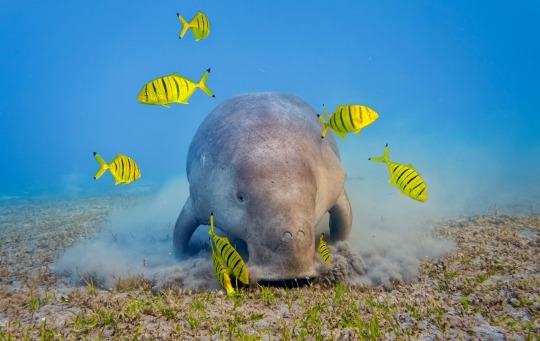
#dugongs#dugong#world dugong day#climate change#nature#sustainability#climate crisis#ecosystem#coastal#environment#environmental science#environmentalism#conservation#anthropocene#habitat#animals#sirens#sirenians
3 notes
·
View notes
Text
people need to realize the barbie movie is not the epitome of feminism. yes, it did highlight women’s importance and issues women face in society but those issues are incredibly minuscule in comparison to ACTUAL problems women in the world face.
in certain places in the world, there are women who have no access to education. they are expected to be married off like they’re some sort of cattle. they raised in a society that expects one thing from them and that’s extreme subservience to men.
in palestine, women and little girls are taking medical substances to prevent their menstrual cycle because they do not have access to hygiene products. they are being raped by idf soldiers, they are being held captive, and they are being murdered.
in countries like india, singapore, sri lanka, and more, marital rape is still legal.
my point is not to take away people’s joy for the film, but putting it on this sort of pedestal of values for feminism is taking away importance of actual feminist issues.
6 notes
·
View notes
Text


Interview with Teruki Uchise of 14th Addiction
Loaded Fashion Magazine Vol. 6 (2014)
English Translation:
Page 1
Born in 1971 in Osaka Prefecture. At the age of 18, he moved to the United States alone and then moved to Mexico. Based on the know-how gained locally, he established KMRii, a brand that sells handmade accessories. Established "14th Addiction" in 2007.
Without being bound by established theories or preconceived notions, he creates products based on the experiences he gained from his own travels and his own unique values. "We have an atelier in Bali, and all products are handmade by local craftsmen."
The brand 14th Addiction offers leather items and other products that seem to have a life of their own. The designer, Mr. Teruki, has a unique background among many fashion designers.
"I had a strong desire to go overseas since I was in junior high school, and it was influenced by the music, movies, and novels that I liked and was exposed to at the time. In particular, the book "Exiles" (by Robert Harris) had a big influence on me and made a strong impression on me. I left Japan as soon as I turned 18 and went to America to find myself. I spent a few years there, but I didn't really like it, so I went to Mexico."
A foreign land with a bad security situation. Gangsters, drug dealers, cult groups, etc. are sometimes in the news. In 1990, the young man in his 20s moved to Mexico on his own, and he didn't feel any particular fear. Instead, he thought, "If I'm going to live, this is the place."
"I'm from Osaka, so Mexico has a similar vibe to Osaka (laughs). When I started living in Mexico, something suddenly occurred to me. To begin with, Japanese people and Mexicans are different in size, and they might even pull out a gun. In a place like that, you can't win physically. So you have to win mentally. It's important to approach the other person without being wary as much as possible and have a heart-to-heart conversation. If you feel fear, the other person will definitely know, and you'll be looked down upon right away. That's the trick, or how to navigate the world, I learned in Mexico."
The thing he wanted most was survival skills. After that, at the age of 24, TERUKI's career as a designer began. He started making accessories by imitating the Mexican Indians he met there.
"Since I was a teenager, I wanted to acquire the ability to survive. Survival skills are the ability to survive in the ultimate situation of traveling around the world, where no one knows you or helps you. When exposed to such a situation, I always wondered, 'What can I do?' That's when I discovered accessory making, learned a lot, acquired the know-how, actually made things, and sold them on the street when they were finished. That's how I began my life."
Make and sell, make money, and move on to the next town. With the help of TERUKI's extraordinary survival skills, his skills were so impressive that even local colleagues in the industry respected him. Whenever they found a new technique or material, they would negotiate and trade know-how with other craftsmen. TERUKI's works were of such high quality that they commanded overwhelmingly high prices on the street accessory market at the time. "I was selling accessories near the resort town of Cancun, and during the Christmas season many tourists came from New York and other places. People from the film and music industries among them saw the things I made and said, 'Why are you selling in a place like this? You can go much further.' I remember that this gave me a lot of confidence and marked a turning point for me."
Page 2
His only source of inspiration was his own travel experiences. After that, he continued to travel around the world, visiting America, Canada, Mexico, Guatemala, India, Sri Lanka, Thailand, Holland, England, Germany, France, Spain, Australia, etc. In 2000, he launched the accessory brand "KMRii" and established an atelier in Bali in the same year. In his atelier in Bali, he created an environment where all production processes could be carried out, from production to the distribution system for overseas shipments. After that, he approached music festivals in various European countries and built a network with overseas artists. In 2004, he also produced a leather jacket for Steven Tyler of Aerosmith. In 2006, he handed over "KMRii" to a friend who had been with him since the company's launch, and in 2007, he established the men's brand "14th Addiction" and the women's brand "Catorce", which mainly focus on clothing.
"I didn't intend to start a fashion brand, but I made a few leather jackets, which were very well received, and the brand was born naturally from that. I don't feel like I'm in the fashion business at all, I just incorporate the inspiration I get from my travel experiences into my clothes. I project the people I meet on my travels, the scenery I see, and the messages I feel at each moment. My way of expression happens to be making clothes, bags, shoes, and accessories, so I definitely put my spirit into each and every piece."
The theme of this season is "Eternal Voyager." TERUKI has returned to his roots and created a powerful lineup by tracing his memories of his own travels. At the collection held in Tokyo recently, close friends of his, musician MIYAV- and director Takashi Tamura (Drum Can), also supported the show, adding a touch of glamour.
"I didn't go to fashion school or study fashion, but the experiences and knowledge I gained from traveling alone to unfamiliar places have really helped me. I don't want to get stuck in a mold in the pursuit of individuality, but rather, I want to break the mold and go all out! That's my message. I would be happy if we could give people who come into contact with our work a little nudge in the direction of wear it. I would like to continue making things like that."
2 notes
·
View notes
Note
Thank you so much for answering my ask about the sodastream and oxfam situation.
I personally think it's really disappointing and I'm kind of annoyed because she was "neutral" and kind of dismissive about the company being on a settlement. I didn't know about this before becoming a fan 😭😭 and I'm very pro palestine so this is upsetting I'm ngl. I'm trying to remain hopeful that she will say something (Marcel better answer your dms)
Anyways, if you could make that master post of the work she's done for different causes I would really appreciate it.
Let's continue to spread awareness and advocated for palestine!!
i didn’t know it too, i discovered in the past weeks. i’am feeling a bit unsure on how to proceed because i fully support the cause, but her silence and her past doing isn’t something i’m willing to support along with her.
i look up a lot to her, but, lately i can’t bring myself much to even follows what she’s doing with interests or happiness to see her up and about. i know her work is a thing and her own personal beliefs are another, but, i can’t bring my self to stan someone who stay silent in front of a genocide. no matter how much i love her work. maybe i’m hypocrite –whatever, i just can’t.
as for her publicist well, i’m pretty sure he will not answer me, like the other people i texted to, and we likely know why. so yeah.
to answer your last question we can start with her own skin care brand. she is proposing to the market and educating people on the importance of having a routine of skin care, but also to respect the environment. their products are cruelty free (they test the products first hand and not on animals) and, of course, they are good for the environment. the packaging around every product is completely reusable and made with materials good for the environment.
her brand made also lots of collabs with different other brands on support of women empowerment and healthy lifestyle. they also made pride month’s contents last year.
scarlett is in the first line for woman’s rights. she has been invited to speak and partecipate on woman’s march a lot. she talked about the importance of the right of abortion, donated for helping research to find a breast cancer cure (in the past weeks she went to an event about it and donated $2M).
she has been active during her ambassador role at Oxfam. in 2007 she skipped the oscars in order to tour in india and sri lanka for the Oxfam project visiting anti violence center for women.
recently she has been active with the OpenAI situation getting politicians to write a law about it and a member of the congress has asked her publicly to come to the congress to speak in order to encourage to pass the law.
and, of course, she has been active in her world too. during the SAG - AFTRA strike she has been one of the A-list actors to find seat and find à solution on the matter, she also donated for the cause.
she probably did many more good actions and advocacy, these are the most majoring one i guess.
#anon#anon ask#anonymous#nonnie#romanovthinkver#answered#scarlett johansson#natasha romanoff#romanoffthereal#marvel#black widow
4 notes
·
View notes
Text

🙏 Greetings from JAY MA INTERNATIONAL 🌺
🔴 Are you looking for a solution for cracks?
🔴 Are wall cracks making your house look cheap?
👉 Then definitely contact us. We provide the best quality Construction Fiber and Concrete Fiber.
JAYMA INTERNATIONAL stands as a premier importer, manufacturer, and supplier of top-notch Concrete and Construction Fibers, renowned for their unparalleled quality and competitive pricing.
Our core strength lies in delivering superior AR Glass Fibers across various sizes, including 6mm, 12mm, and 24mm. Custom orders for specific sizes are welcomed for both export and bulk purchase requirements. As leading exporters of Concrete Fibers, we cater to markets in the UAE, Sri Lanka, Bangladesh, Africa, and South America, ensuring our customers benefit from the finest quality at the most competitive rates.
At JAYMA INTERNATIONAL, we prioritize the success of our customers, underpinned by our unwavering commitment to providing industry-leading after-sales services.
In our nine-year journey in Concrete and Construction Fibers, JAYMA INTERNATIONAL has been honored with numerous prestigious awards, a testament to our dedication to excellence and customer satisfaction.
🤷♂ To learn more about our products, visit our website at 👇
https://jaymainternational.com
📲 Call and WhatsApp: http://wa.me/+919889883992
FiberforPQC
fiberforconcrete
Fiberforconstruction
Microfibermonofilament
fiberconstruction
Fiberforgrc
crackcontrolfiber
Fiberforplaster
Lowestpriceconcretefiber
Concretefibermanufacturing
concretefiber
FiberforRMC
fiberforflooring
2 notes
·
View notes
Text

Sally Field in Norma Rae (Martin Ritt, 1979)
Cast: Sally Field, Beau Bridges, Ron Leibman, Barbara Baxley, Gail Strickland, Morgan Paull, Robert Broyles, John Calvin. Screenplay: Irving Ravetch, Harriet Frank Jr. Cinematography: John A. Alonzo. Production design: Walter Scott Herndon. Film editing: Sidney Levin. Music: David Shire.
If Norma Rae were made today, it would have to end with the owners closing the textile mill after the pro-union vote and shipping the jobs to Sri Lanka. Only two years after the movie was released, Ronald Reagan fired the striking air traffic controllers, giving impetus to the anti-union movement that persists to this day. Which is not just to say that Norma Rae is dated -- it was a bit that way at the time -- but that it persists in the memory largely because of Sally Field's breakthrough performance. It won her her first Oscar, and a well-deserved one: She carries the movie as few actresses have done before or since, freeing her from the trap that the TV series Gidget (1965-66) and The Flying Nun (1967-70) had caught her in. She had proved herself with the 1976 TV miniseries Sybil, for which she won an Emmy, but nothing demonstrated her ability to hold an audience in her grasp like Norma Rae. The screenplay by Irving Ravetch and Harriet Frank Jr. also earned an Oscar nomination, but it's scattered and sketchy, only touching lightly on the many elements of union organizing in the South -- racism, political chicanery, violence -- which are probably more important to understand than what the film focuses on: the grit and determination of one young textile worker and one stereotypically lefty Jewish organizer (Ron Leibman).
10 notes
·
View notes
Text
In 1678, a Chaldean priest from Baghdad reached the Imperial Villa of Potosí, the world’s richest silver-mining camp and at the time the world’s highest city at more than 4,000 metres (13,100 feet) above sea level. A regional capital in the heart of the Bolivian Andes, Potosí remains – more than three and a half centuries later – a mining city today. [...] The great red Cerro Rico or ‘Rich Hill’ towered over the city of Potosí. It had been mined since 1545 [...]. When Don Elias arrived [...], the great boom of 1575-1635 – when Potosí alone produced nearly half the world’s silver – was over, but the mines were still yielding the precious metal. [...]
On Potosí’s main market plaza, indigenous and African women served up maize beer, hot soup and yerba mate. Shops displayed the world’s finest silk and linen fabrics, Chinese porcelain, Venetian glassware, Russian leather goods, Japanese lacquerware, Flemish paintings and bestselling books in a dozen languages. [...]
Pious or otherwise, wealthy women clicked Potosí’s cobbled streets in silver-heeled platform shoes, their gold earrings, chokers and bracelets studded with Indian diamonds and Burmese rubies. Colombian emeralds and Caribbean pearls were almost too common. Peninsular Spanish ‘foodies’ could savour imported almonds, capers, olives, arborio rice, saffron, and sweet and dry Castilian wines. Black pepper arrived from Sumatra and southwest India, cinnamon from Sri Lanka, cloves from Maluku and nutmeg from the Banda Islands. Jamaica provided allspice. Overloaded galleons spent months transporting these luxuries across the Pacific, Indian and Atlantic oceans. Plodding mule and llama trains carried them up to the lofty Imperial Villa.
---
Potosi supplied the world with silver, the lifeblood of trade and sinews of war [...]. In turn, the city consumed the world’s top commodities and manufactures. [...] The city’s dozen-plus notaries worked non-stop inventorying silver bars and sacks of pesos [...]. Mule trains returning from the Pacific brought merchandise and mercury, the essential ingredient for silver refining. [...] From Buenos Aires came slavers with captive Africans from Congo and Angola, transshipped via Rio de Janeiro. Many of the enslaved were children branded with marks mirroring those, including the royal crown, inscribed on silver bars.
Soon after its 1545 discovery, Potosí gained world renown [...]. Mexico’s many mining camps [...] peaked only after 1690. [...] Even in the Andes of South America there were other silver cities [...]. But no silver deposit in the world matched the Cerro Rico, and no other mining-refining conglomeration grew so large. Potosí was unique: a mining metropolis.
Thus Don Elias, like others, made the pilgrimage to the silver mountain. It was a divine prodigy, a hierophany. In 1580, Ottoman artists depicted Potosí as a slice of earthly paradise, the Cerro Rico lush and green, the city surrounded by crenellated walls. Potosí, as Don Quixote proclaimed, was the stuff of dreams. Another alms seeker, in 1600, declared the Cerro Rico the Eighth Wonder of the World. A [...] visitor in 1615 gushed: ‘Thanks to its mines, Castile is Castile, Rome is Rome, the pope is the pope, and the king is monarch of the world.’ [...]
---
For all its glory, Potosí was also the stuff of nightmares [...].
Almost a century before Don Elias visited Potosí, Viceroy Francisco de Toledo revolutionised world silver production. Toledo was a hard-driving bureaucrat of the Spanish empire [...]. Toledo reached Potosí in 1572, anxious to flip it into the empire’s motor of commerce and war. By 1575, the viceroy had organised a sweeping labour draft, launched a ‘high-tech’ mill-building campaign, and overseen construction of a web of dams and canals to supply the Imperial Villa with year-round hydraulic power, all in the high Andes at the nadir of the Little Ice Age. Toledo also oversaw construction of the Potosí mint, staffed full-time with enslaved Africans. [...] Toledo’s successes came with a steep price. Thanks to the viceroy’s ‘reforms’, hundreds of thousands of Andeans became virtual refugees (those who survived) and, in the search for timber and fuel, colonists denuded hundreds of miles of fragile, high-altitude land. [...] The city’s smelteries belched lead and zinc-rich smoke [...].
The Habsburg kings of Spain cared little about Potosí’s social and environmental horrors. [...] For more than a century, the Cerro Rico fuelled the world’s first global military-industrial complex, granting Spain the means to prosecute decades-long wars on a dozen fronts – on land and at sea. No one else could do all this and still afford to lose. [...]
By [...] 1909 [...], mineral rushes had helped to produce cities such as San Francisco and Johannesburg, but nothing quite compared for sheer audacity with the Imperial Villa of Potosí, a neo-medieval mining metropolis perched in the Andes of South America.
---
Text by: Kris Lane. “Potosi: the mountain of silver that was the first global city.” Aeon. 30 July 2019. [Bold emphasis and some paragraph breaks/contractions added by me.]
81 notes
·
View notes
Text

The coconut industry is an important source of foreign exchange earning & employment generation for Sri Lanka.
More Info Sri Lanka Coconut & Coconut Based Products Industry Capability Profile 👉 https://bit.ly/3V9dBGu
3 notes
·
View notes
Text
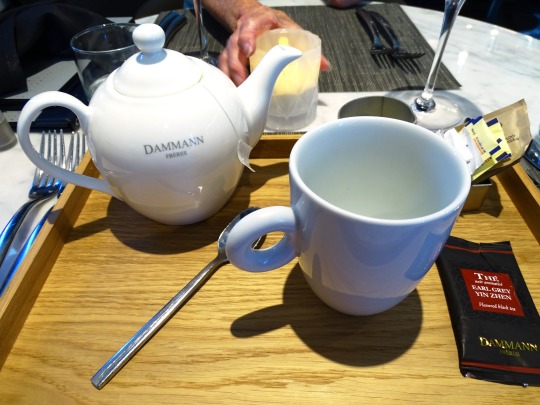
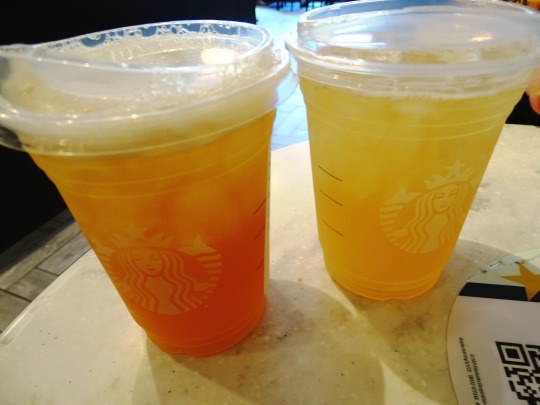

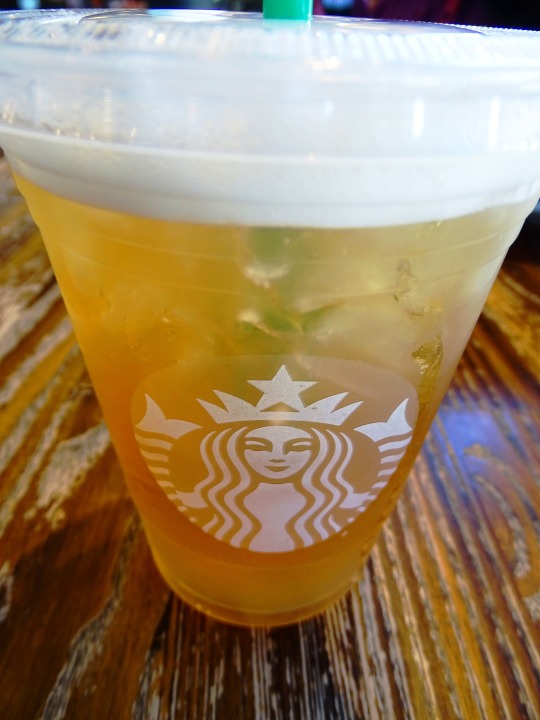





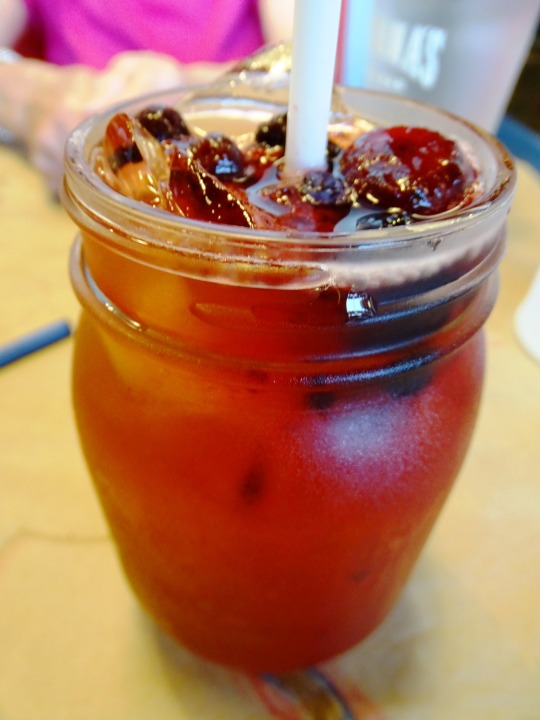


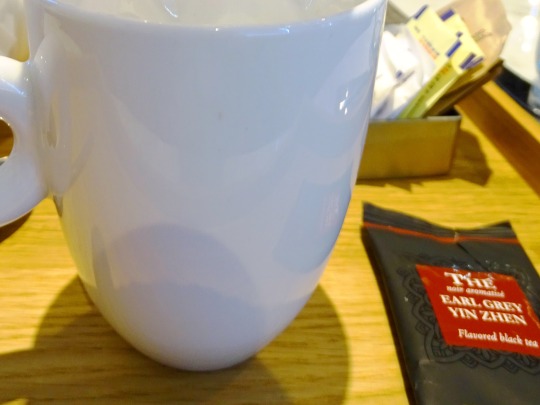
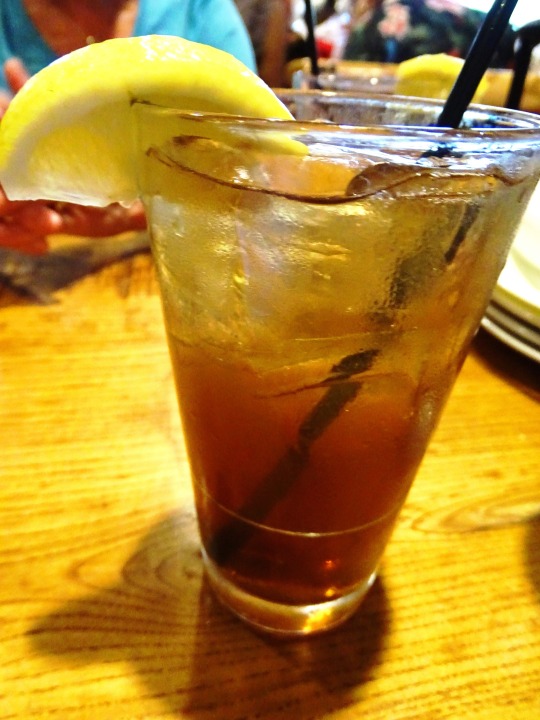
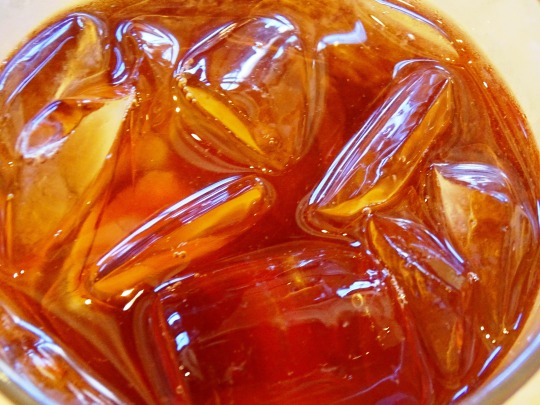
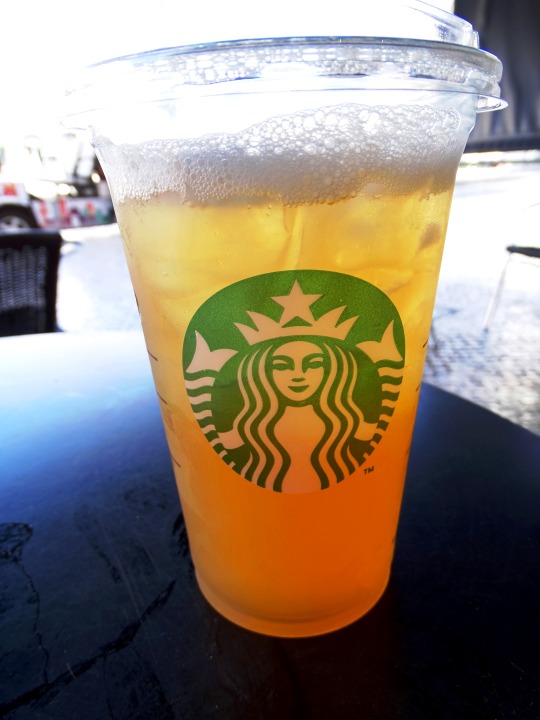







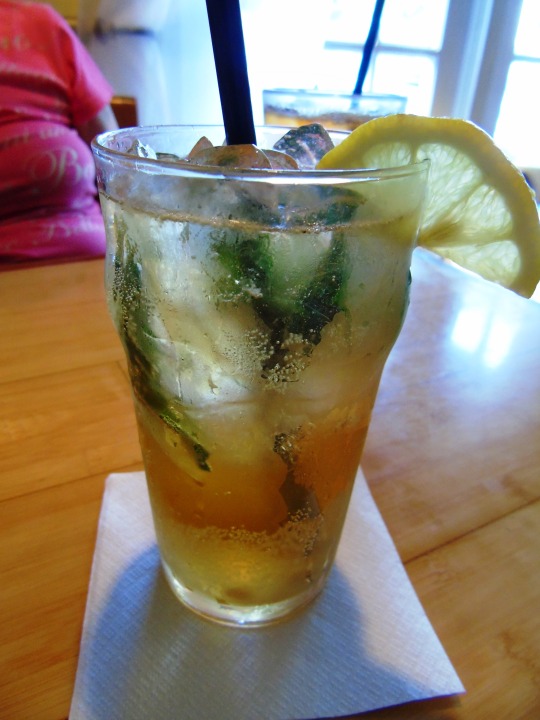


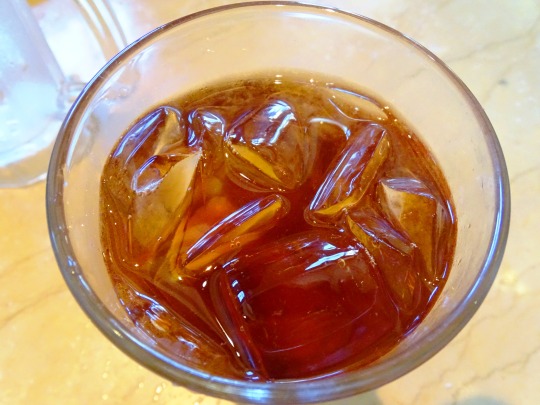

International Tea Day
While everyone loves a cup of tea, many of the workers and producers of that tea face poor conditions and pay. Help raise awareness and keep tea fair.
The tea industry provides millions of people around the world with cups of tea in the morning. One of the biggest producers of tea, India, recognizes the importance of tea in its communities and as a commodity for commerce.
However, much of the working conditions for those within the tea industry still need much improvement. If you think this holiday was about drinking tea, well think again! International Tea Day is all about the tea workers and bringing civil rights into action. Let’s see how this holiday came to pass.
Do you love a good cup of tea? While International Tea Day can certainly involve paying homage to tea, we should pay homage to those working in the tea industry. The best way to do this is by helping to raise awareness regarding their working conditions so they can be improved.
History of International Tea Day
The International Tea Day campaign was launched in 2005 by the trade unions, small tea growers and civil society organizations in Asia and Africa to address the issues of living wages for workers and fair prices for small tea producers.
The International Tea Conference in New Delhi came out with an International Declaration on the rights of workers and small growers to help regulate uneven competition, land ownership, safety regulations, rights of women, social security and living wages. Another organization, The Tea Board of India, proposed International Tea Day in hopes of it becoming an official holiday to the UN Food and Agriculture Organization.
This was proposed by chairman Santosh Kumar Sarangi in 2015. According to the chairman, the proposal of India was supported by countries such as Canada, the United States, European Union, Sri Lanka, China, Japan, Kenya, and Malawi. While the holiday doesn’t have official status, the goal of this holiday is to recognize the vulnerable situations that tea producers in India have with current living conditions and worker-related policies.
The day also focuses on deliberating on urgent issues such as residues, climate change, technology and trends on production and consumption in the tea industry. To observe this day, over 150 representatives from tea organizations gather and conduct a seminar to discuss the pervading problems the tea industry has as well as problems faced within their own country.
International Tea Day Timeline
2737 BC Tea is discovered as a beverage
Legend has it that Chinese Emperor Shen Nung is sitting beneath a tea tree while a servant boiled water for drinking. Some leaves fall into the cup and begin the practice of drinking what is now called “tea”.
1610 Tea comes to Europe
It is believed that the Dutch were the first to bring tea to Europe, just a few years prior to the introduction of coffee by Venetians.
1773 The Boston Tea Party occurs
With the intention of revolting against the high taxes levied by the British government without providing any voice, residents of Massachusetts throw tea into the Boston Harbor. “No taxation without representation” is the major complaint.
2004 International Tea Day is created
At the World Social Forum, International Tea Day is conceived and then celebrated the following years in New Delhi and Sri Lanka, then later in other tea-producing places like Nepal, Viet Nam, Bangladesh and others.
2019 United Nations adopts International Tea Day
After some years of advocating for its observance, International Tea Day is adopted by the United Nations General Assembly at the suggestion of the FAO Intergovernmental Group on Tea.
How to Celebrate International Tea Day
If you’re a lover of tea, then do some research about some of your favorite companies. Try looking up tea brands that support fair trade, and possibly switch to those brands to make a difference in the way you buy products such as tea. Use the hashtag #internationalteaday to help recognize it as an official holiday and educate others about the tea industry if you’re interested.
You could also use International Tea Day to try a variety of tea you have never had before. Matcha, for example, is highly popular as of late. You need to shop with care, though! The first thing you need to take a look at is how the Matcha has been produced and sourced.
You need to ensure that all veins and stalks have been removed so that there is not any bitterness and only the finest leaves should be used. Secondly, the color of the matcha powder is a significant factor. The greener the color is, the better. This is because the leaves are forced to overproduce chlorophyll because Matcha is shade-grown, which causes the vibrant green shade.
If the Matcha is yellow or brown in color, this is a sign that the leaves have not been properly shaded or that branches and stalks have been included. The price is the third factor to consider. Like most things, if you want quality, you can expect to pay a little bit more.
If something seems too good to be true, the chances are that it is. The feel of Matcha is also important. It should be a fine powder that is very silky. Last but not least, the taste is obviously a crucial attribute when it comes to quality. It should have a clean and naturally sweet taste.
Why not make some delicious baked green tea treats on International Tea Day and have a bake sale to raise money and awareness regarding working conditions in the tea industry? Green tea recipes are available in their abundance. People are actively searching for different ways to enjoy green tea. While green tea is delicious when simply mixed with hot water, there is nothing wrong with switching it up from time to time, especially on International Tea Day!
An easy and delicious recipe is Matcha Meringue Kisses. To make this you will need Matcha, sugar, egg whites, and powdered sugar. Begin by sifting together the Matcha and the powder sugar, and then whip the egg whites until they have soft peaks. Gradually add the sugar and whip until stiff peaks. Gently fold the Matcha into this mixture and then transfer to a pastry bag. Pipe the mixture into small kisses onto a baking tray and then bake for around an hour.
Or, why not make Green Tea Donuts? For this, you need green tea, honey, melted butter, milk, egg, salt, baking powder, sugar, and cake flour. You whisk the green tea, salt, baking powder, sugar, and flour. Add the honey, melted butter, milk, and egg, and then whisk. Use a pastry bag to pipe the batter into the mould. Then, simply bake the donuts for eight minutes. You can make your own glaze to go on the top – chocolate goes well!
Other delicious baked treats to try include green tea muffins, brownies and shortbread!
International Tea Day FAQs
What is International Tea Day?
Created to celebrate and pay tribute to the countries that produce tea to supply to the world, starting in India and moving to other places like Sri Lanka, Malawi, Uganda, Bangladesh, Vietnam and more.
When was International Tea Day first celebrated?
International Tea Day first got its start in 2004 when it was celebrated in New Delhi. It grew over the years and by 2019 the day was adopted by the United Nations General Assembly.
How to celebrate International Tea Day?
A great way to observe this day is by learning a bit more about the nations who produce tea for the world. Also, don’t forget to order a cup of fair trade tea for one, or take a friend out to enjoy a cuppa together.
What is the theme of International Tea Day?
The theme for this day devoted to tea producers changes each year, but some of the past themes have included themes such as Tea and Fair Trade or Harnessing Benefits for All from Field to Cup.
When is International Tea Day celebrated?
Taking place on May 21 of each year, International Tea Day originally took place on December 15 from 2005 when it was often only celebrated by tea-producing countries. It changed to May 21 when the UN adopted the day.
Source
#Earl Grey#Earl Grey Tea is my favorite tea#Computer tea Earl Grey hot#USA#I don't like coffee#I only drink tea#original photography#always unsweetened#Lemon Black Tea Lemonade#Tropical Ice Tea#Peach Green Tea#Lavender Ice Tea#Pineapple Black Tea#Strawberry White Tea#Peach Citrus Green Tea#International Tea Day#21 May#InternationalTeaDay#travel#vacation#Capilé#Portugal#Women are Persons By Barbara Patterson#Tea Earl Grey Hot#Spiked Texas Tea#Lemon Black Tea
2 notes
·
View notes
Text
The Maldives has a rich and complex history that spans over 2,000 years. The island nation's history includes influences from various cultures, religions, and colonial powers. Here's a detailed timeline of key events in Maldivian history:
### **Ancient History**
- **500 BCE - Early Settlers**: The first inhabitants of the Maldives are believed to have been Dravidian people from southern India and Sri Lanka, who arrived around 500 BCE. They practiced an ancient form of Hinduism and Buddhism.
- **300 BCE - Theravada Buddhism**: By this time, Buddhism began to spread throughout the Maldives, significantly influencing its art, architecture, and culture. Many Buddhist relics and stupas have been found on the islands.
### **Medieval Period**
- **1153 CE - Conversion to Islam**: This is a key moment in Maldivian history. The last Buddhist king, Dhovemi, converted to Islam under the guidance of a North African scholar named Abu al-Barakat. The Maldives became a Sultanate, and Islam has remained the dominant religion ever since.
- **12th - 16th Century - Sultanate Period**: For several centuries, the Maldives was ruled by various sultans. The kingdom was an important trading hub in the Indian Ocean, dealing in cowry shells (used as currency), coconut products, and other goods.
- **1558 - Portuguese Invasion**: The Portuguese briefly occupied the Maldives, but their rule was unpopular. They attempted to convert the Maldivians to Christianity, leading to resistance from the local population.
### **Colonial Era**
- **1573 - Liberation from the Portuguese**: Mohamed Thakurufaanu, a national hero, led a successful revolt against the Portuguese and re-established Maldivian independence. He became the Sultan and ruled until his death in 1585.
- **17th - 19th Century - Dutch and British Influence**: The Maldives fell under the sphere of influence of the Dutch in Ceylon (Sri Lanka) in the 17th century. In 1796, the British took control of Ceylon and, with it, gained influence over the Maldives.
- **1887 - British Protectorate**: The Maldives became a British protectorate in 1887. The British allowed the Maldivians to retain their internal sovereignty while overseeing foreign relations and defense.
### **20th Century**
- **1932 - First Constitution**: The Maldives adopted its first constitution in 1932, introducing a constitutional monarchy. However, political turmoil followed, and Sultan Hassan Nooraddeen was deposed in 1934.
- **1953 - Short-lived Republic**: The first attempt to establish a republic occurred in 1953, but the monarchy was restored after less than a year. Sultan Muhammad Fareed Didi became the head of state.
- **1965 - Independence**: On July 26, 1965, the Maldives gained full independence from Britain, ending its status as a protectorate. The Sultanate continued under King Muhammad Fareed Didi.
- **1968 - Republic Established**: In a national referendum, the monarchy was abolished, and the Maldives became a republic. Ibrahim Nasir became the first President of the Second Republic.
### **Modern Era**
- **1978 - Maumoon Abdul Gayoom's Rule**: Maumoon Abdul Gayoom became president in 1978 and ruled the Maldives for 30 years. His era saw modernization efforts but also accusations of authoritarianism and human rights abuses.
- **2004 - Tsunami**: A devastating tsunami struck the Maldives, causing widespread destruction and loss of life. The disaster underscored the vulnerability of the low-lying island nation to environmental threats.
- **2008 - Democratic Reforms**: In 2008, the Maldives held its first multi-party elections, and Mohamed Nasheed became the first democratically elected president. His government focused on human rights and climate change issues.
- **2012 - Political Turmoil**: Nasheed resigned in 2012 amid protests and a police mutiny, which he later described as a coup. Vice President Mohammed Waheed Hassan took over as president.
- **2013 - Abdulla Yameen's Presidency**: Abdulla Yameen, the half-brother of former President Gayoom, won the 2013 presidential election. His administration faced criticism for curbing freedoms and consolidating power.
- **2018 - Return to Democracy**: In the 2018 elections, Ibrahim Mohamed Solih defeated Yameen, marking a return to democratic governance. Solih's government has since focused on rebuilding international relations and addressing climate change.
### **21st Century Challenges**
- **Climate Change**: The Maldives is one of the most vulnerable countries in the world to the effects of climate change, particularly rising sea levels. The government has been active in international efforts to combat global warming.
The Maldives' history reflects a blend of ancient traditions, colonial encounters, and modern political changes. The country continues to navigate the challenges of its unique geography and political landscape.
0 notes